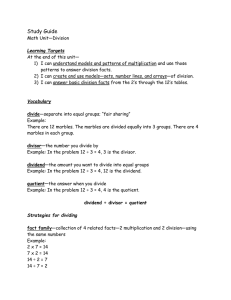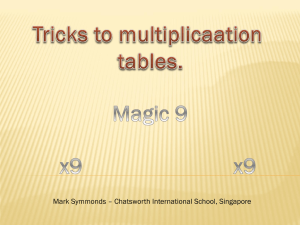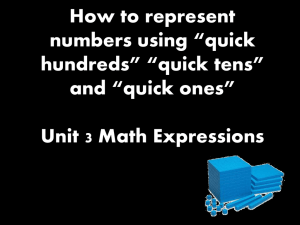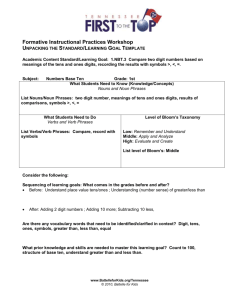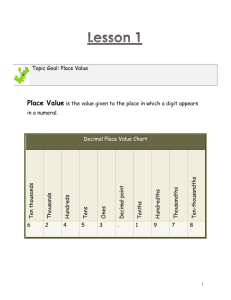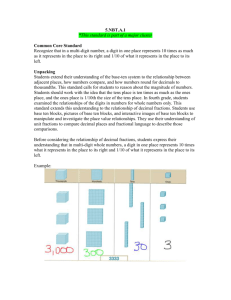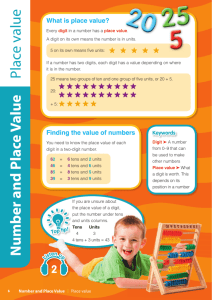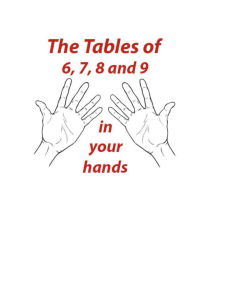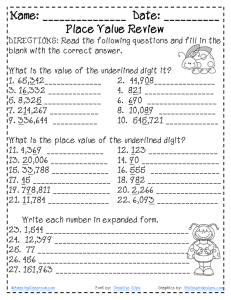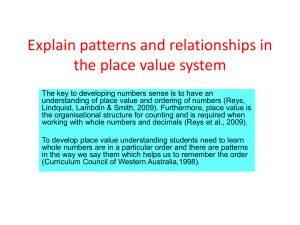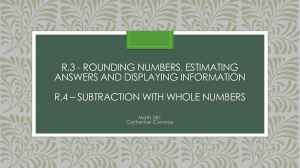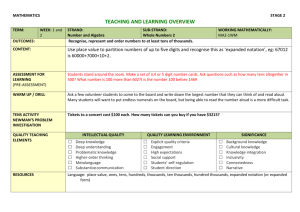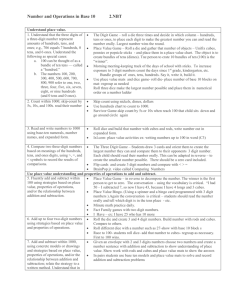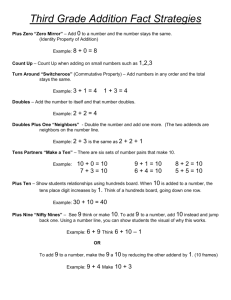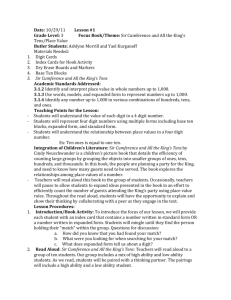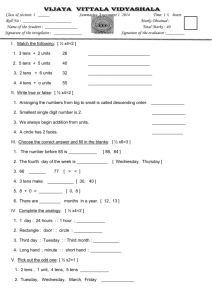Multiplication by Nine - Kentucky Center for Mathematics
advertisement
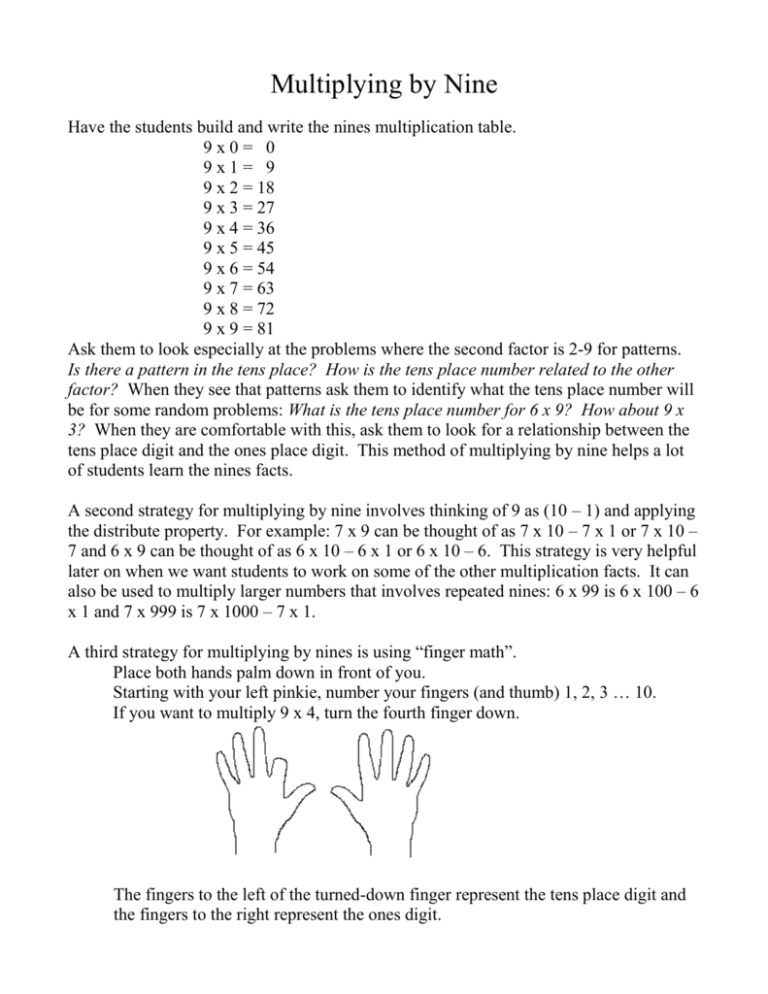
Multiplying by Nine Have the students build and write the nines multiplication table. 9x0= 0 9x1= 9 9 x 2 = 18 9 x 3 = 27 9 x 4 = 36 9 x 5 = 45 9 x 6 = 54 9 x 7 = 63 9 x 8 = 72 9 x 9 = 81 Ask them to look especially at the problems where the second factor is 2-9 for patterns. Is there a pattern in the tens place? How is the tens place number related to the other factor? When they see that patterns ask them to identify what the tens place number will be for some random problems: What is the tens place number for 6 x 9? How about 9 x 3? When they are comfortable with this, ask them to look for a relationship between the tens place digit and the ones place digit. This method of multiplying by nine helps a lot of students learn the nines facts. A second strategy for multiplying by nine involves thinking of 9 as (10 – 1) and applying the distribute property. For example: 7 x 9 can be thought of as 7 x 10 – 7 x 1 or 7 x 10 – 7 and 6 x 9 can be thought of as 6 x 10 – 6 x 1 or 6 x 10 – 6. This strategy is very helpful later on when we want students to work on some of the other multiplication facts. It can also be used to multiply larger numbers that involves repeated nines: 6 x 99 is 6 x 100 – 6 x 1 and 7 x 999 is 7 x 1000 – 7 x 1. A third strategy for multiplying by nines is using “finger math”. Place both hands palm down in front of you. Starting with your left pinkie, number your fingers (and thumb) 1, 2, 3 … 10. If you want to multiply 9 x 4, turn the fourth finger down. The fingers to the left of the turned-down finger represent the tens place digit and the fingers to the right represent the ones digit.

